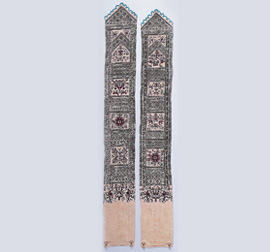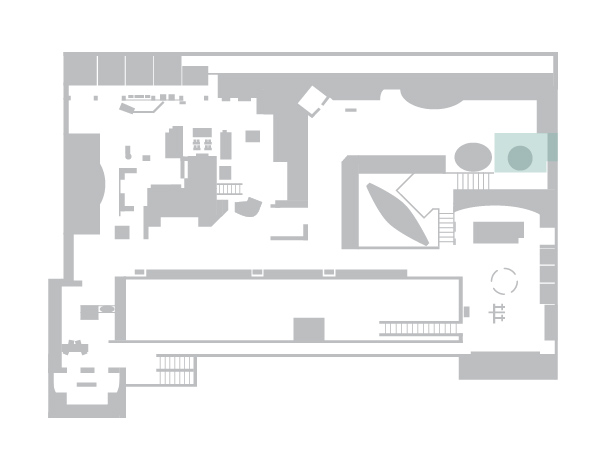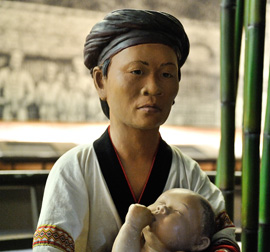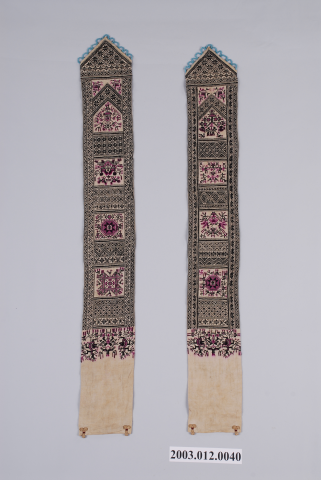:::
Pingpu embroidered sword-shaped girdles
This Pingpu embroidered sword-shaped girdle was made by the plains indigenes. The so-called sword-shaped girdle refers to bed ornaments that were hung on either side of the bed for protection against evil spirits. It can also refer to an accessory adorning the bottom dress of a traditional Chinese garment that looks like a phoenix tail dress. When the Hans settled in Taiwan, the plains indigenous society and dress code were both significantly influenced by Han culture. However, in terms of embroidery techniques and patterns, such items retain the characteristics of the plains indigenous culture.
The introduction of Han embroidery can be traced back to the Ming-Zheng period. Due to the introduction of traditional Chinese embroidery by the settlers, most of the work consisted of clothing and items for daily life, such as colored pants, vamps, quilt covers and door curtains for the homes of common people. Officials or members of the gentry rely on products imported from inland . Taiwanese embroidery draws heavily from the styles of Fujian and Guangdong. Its characteristics include the use of contrasting colors, with red or black used as the primary color, which is then complemented by other colors or pieces of metal , presenting a rich variety of hues. The patterns are elaborate, often based on myths, legends, landscapes, flowers and plants, or poems. The influence of Han embroidery can be seen in the use of flowers and plants (especially the peony, peach blossom, plum blossom, orchid, bamboo and chrysanthemum), words (so-called longevity characters), and lines (spirals, Ruyi, endless knots and coin patterns). These patterns were often intended to ward off evil and ask for blessing.
Geometric embroidery patterns can be seen on the garments of plains indigenes, such as the Paiwan tribe, Rukai tribe and Beinan tribe in southern Taiwan. The sword-shaped girdle has a white bottom and the top is embroidered with purple and black geometric patterns. At the bottom, there is a mesh bag made from silk strings, which is one way that this style is distinct from that of the Han’s.















